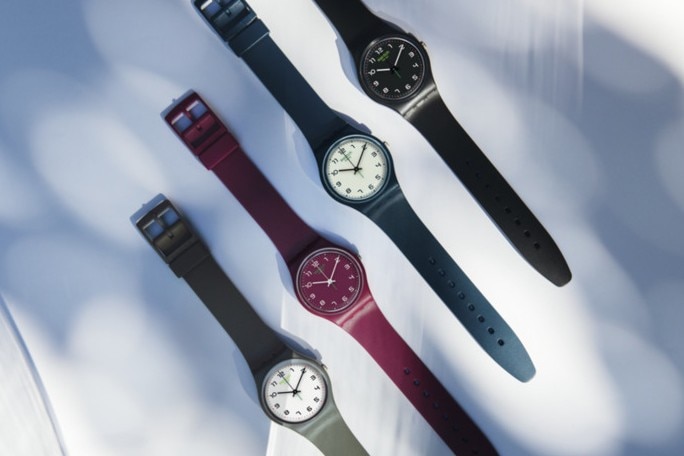This article originally appeared in Domus 707, July 1989.
One million watches sold in the first year, ten million in the second, fifty by the end of the fifth; twelve million in the last six months making a total 62 million pieces in just over five years. Such are the unequivocal figures behind the success of the Swatch watch, which has almost alone led the recovery of the entire Swiss watchmaking industry.
And yet, at the end of the ’70s the traditional European leadership in the making of precision movements had seemed irremediably lost to the relentless invasion of Japanese watches. These were tough, cheap, analog and digital watches, often similar to mini-computers with numerous keys for different functions. Everyone trusted the precision of quartz movements, invented by the Swiss in 1967 but developed and commercialized in series by Japanese makers.
The lower end of the market, in which large numbers can be sold, appeared firmly in the hands of the Japanese. While these were hard times for many of the small European manufacturers, who tried to stay afloat by concentrating on more and more expensive and exclusive models, the crisis was still more dire for ETA SA Fabrique d’Ebauches, by far the most important Swiss manufacturer of movements, which supplied some 80% of Swiss companies and now saw its output and profits plummet. In 1980 ETA decided it would try to counter the Japanese success with a low-priced but quality product. It had to be one that would not irritate the more conservative Swiss makers who feared discredit to the prestigious image of their own models. But to beat the competition from the Far East, with the high European costs, posed an extremely difficult challenge which all depended on technological innovation.
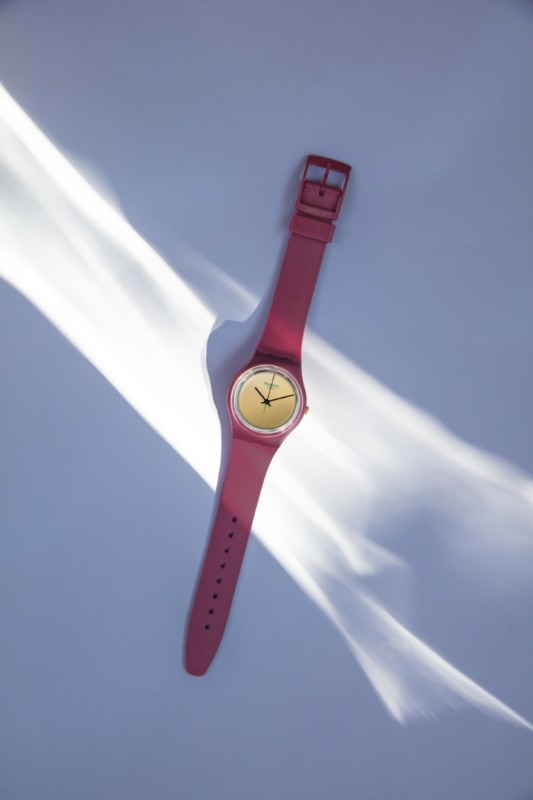
Under the guidance of physicist Wilhelm Salate, a team of engineers set to work on the idea of a plastic watch that could be assembled by total automation. To realize this idea the mechanisms had to be drastically simplified and grouped into preassem-bled modules. Also, it was necessary to avoid the assembly of single elements with pins and screws on metal chassis, an operation to this day carried out manually with infinite and costly precision.
By 1981 the first prototype was ready. Instead of the over 90 pieces normally required to make a quartz watch, the Swatch has only 51, fitted into special molds directly modelled in the synthetic case, with an innovation similar to the introduction of self-bearing coachwork into the automobile industry. The screws were replaced by rivets and ultrasonic welding, with a special closure of the glass hermetically welded to the case, guaranteeing waterproof mechanisms.
Before production could begin however, all the necessary materials and tools had to be developed: a malleable but resistant thermoplastic, plus the machinery capable of injecting and moulding it with the absolute precision required both for the case and for all the minute components. In addition, an automatic and electronically operated assembly line had to be engineered. ETA, which in the menatime had joined the SMH group which also includes Longines and Omega, put its engineers to work. The engineers not only succeeded in solving the problems posed by the new watch, but also supplied the group with an extremely sophisticated know-how which is now in demand.
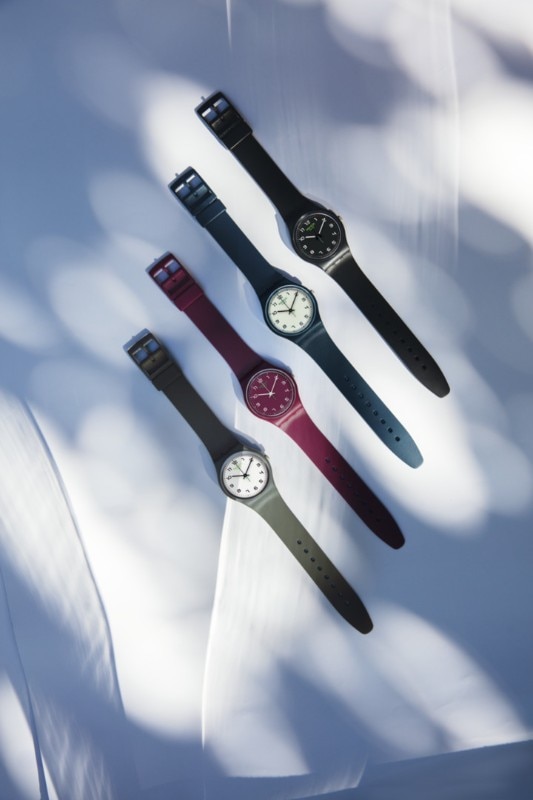
The Swatch would be produced in a single processing cycle, with automatic quality controls at every assembly station, where any defective pieces would be removed from the production line. At the end of the cycle every watch would be subjected to a thermal test with sudden temperature changes from 0° to 100° for 24 hours, and to exhaustive checks on precision and on the dater if there was one. All this to guarantee the quality of a watch which cannot be repaired but is sold at a very affordable price.
The mechanical and electronic problems having been resolved by a veritable technical revolution – no less than seven patents protect the most innovative parts of the Swatch – it remained to define the appearance of the watch. Although the ductility of plastic made it possible to indulge in any style or shape, the heads of Swatch preferred to encapsulate all their technological novelties in a shell with an absolutely traditional form, discarding all freakish whims.
A round dial with analog reading and three hands for hours, minutes and seconds; proportions and details derived from the best rules of long experience; edges and connections softly rounded to suit the shape of the wrist. Not even the new type of attachment between the case and the strap, made with high density moulded polyurethane, introduces any real formal novelty. This very traditional casing lent itself however to the most surprising variations, imposed by an impeccably orchestrated marketing campaign which has transformed the watch into a fashion phenomenon.
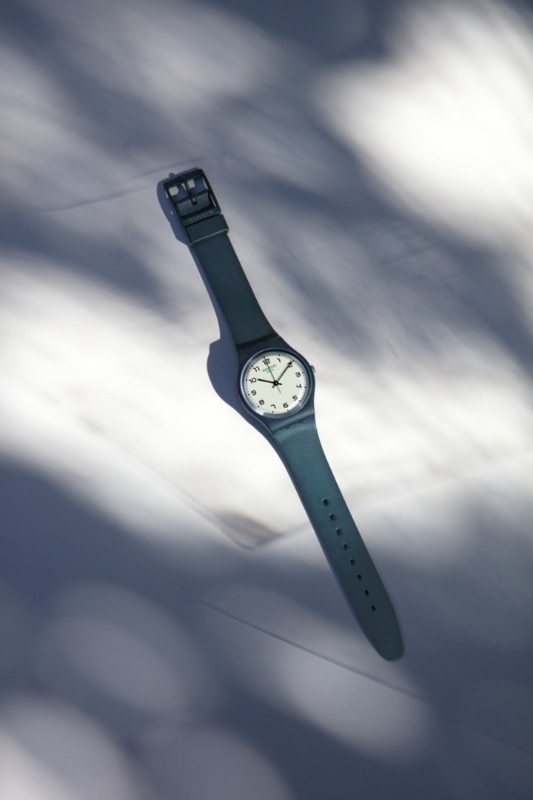
Originally planned for a production of one hundred thousand units per year, the Swatch immediately had an incredible success which from its very first appearance in the spring of 1983, surpassed the initially small supply available. As production was stepped up and new markets were supplied – in Italy the Swatch did not officially arrive until 1986– the collections of models were updated. Like a fashion house, Swatch presents a new collection every spring and autumn. New designs are shrewdly prepared under the guidance of Max Imgrüth, the sales manager. Imgrüth sifts proposals received from consultants scattered throughout the world, who keep a close watch on every new trend and style.
A few changes are enough to have coloured, transparent watches, with multicoloured or perforated straps, dials designed in the most diverse styles or entrusted as miniworks of art to great artists. A few models survive each new collection to become classics, while the majority go out of production, unleashing collecting manias.
With such a fragmentary and flexible output – it takes only six weeks to bring a new model on stream – the Swatch has conquered ever wider market segments and the widest variety of consumers. Recently the creative hub shifted to Italy, and the new collection is to be directed by architect Matteo Thun. The Italian watch market now in fact appears to be a reliable indicator of the most advanced trends. And today the traditional watch with manual winder seems to be very much in fashion again. At Swatch they’re already thinking about it.
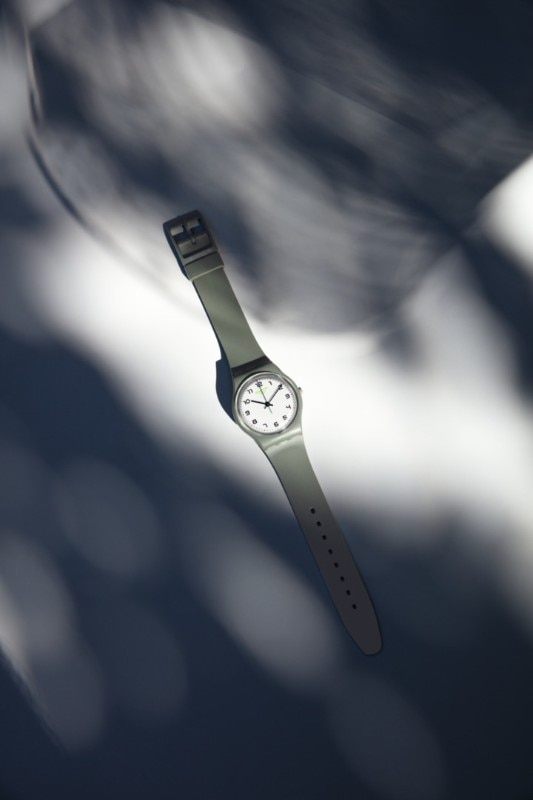
We asked architect Matteo Thun, the new creative manager at Swatch, how he has laid down the lines of his work. “Rather than coordinating a series of always different free-lance contributions, as used to happen, we thought we would marshal this ‘creative chaos’ into a more stable framework. For the 1990 collection we have a group of five Italian, plus six German, British and French designers. These will be joined by Americans and Japanese on particular occasions. The collections are geared to the philosophy developed by Swatch over the years and are organized in three main lines: classic, sport, fashion. We get our starting points from fashion, with Pitti Filati, Interstoff and other events that anticipate designs, colours and theme trends. The difficulty is not to fall victims to a fashion diktat which is in any case more ephemeral than the Swatch product”.
Have you thought about highly transgressive models, or new dealings with artists? “We have defined the Christmas Special, which is going to be fantastic – non-conformist and great fun. As far as collaboration with artists is concerned, I am personally very much against it. The artistic message is inevitably an élitist one. Whereas I would like to cut out the hermetic stuff and to be comprehensible to all age groups. In this way we can keep up the quality mass appeal of Swatch, which I am convinced has not yet waned. It will depend on what we manage to put over.”


